What is a Kaval Flute and Why Does It Haunt Us?
The kaval flute is an ancient wind instrument popular in the Balkans and Anatolia. But calling it just a flute is to miss the point entirely. So what is a kaval flute? It is a voice, an extension of human breath that shares the stories and feelings of its people.
Its unique, breathy sound, once played only by shepherds, is now found in modern jazz, movie music, and world festivals.
Have you ever heard a haunting flute melody in a film and wondered what it was? It might have been a kaval.
This guide will show you what makes this instrument so special. We’ll look at the different kinds of kavals, how they’re played, and whether they are difficult to learn.
Let’s dive in and explore the sound of this incredible flute.
What makes a kaval different from other flutes?
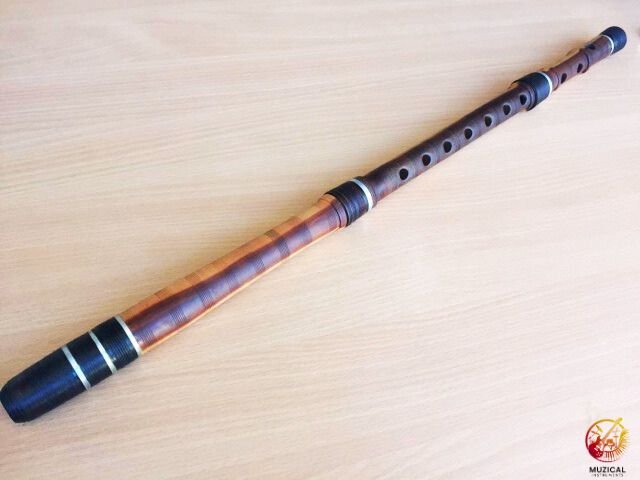
So, what is a kaval flute, and how is it different from a simple recorder? When you look at it, you just see a long wooden tube with finger holes. The real difference is that the kaval has no mouthpiece.
A recorder has a built in piece that guides your breath to make a sound easily. The kaval is just an open tube with a sharpened rim. You have to make the sound entirely on your own by forming a special shape with your lips and blowing across that edge.
It’s a lot like making a sound by blowing across the top of a glass bottle. Finding that perfect “sweet spot” is a game of millimeters and is the hardest part for any new player. This is also what makes the kaval so personal, the sound truly comes from your breath and skill, not just the instrument.
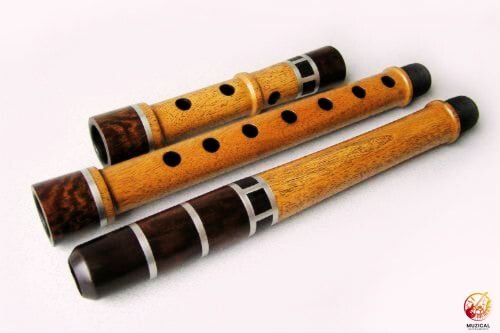
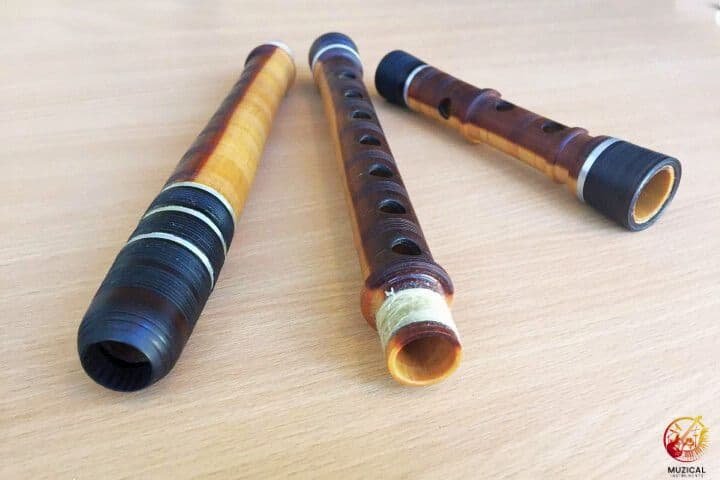
Most kavals are built in three pieces that fit together. This lets you make small tuning adjustments, since wood can swell or shrink in different weather. The layout is simple: seven finger holes on the front and one thumb hole on the back.
Finally, the playing style is unique. Players hold the kaval at a sharp downward angle. From there, two main styles have developed: an airy, breathy sound common in Bulgaria, and a tighter, more focused tone from Turkey, where players often hold a single note for a very long time. It’s a direct link between your breath and the music.
What’s the difference between a Bulgarian and a Turkish Kaval?
To really understand what a kaval flute is, it helps to know about its two main families: the Bulgarian and the Turkish. They might look similar, but they sound and feel quite different, and knowing the difference is key if you want to listen or buy one.
The Bulgarian kaval is the type you’re more likely to hear in world music or even jazz. It’s famous for its very open, airy, and breathy sound. It feels big and full of space. A skilled player can play every note on it, just like the keys on a piano.
A famous musician named Theodosii Spassov took this kaval from village bands to jazz clubs, proving it could hang with saxophones and trumpets.
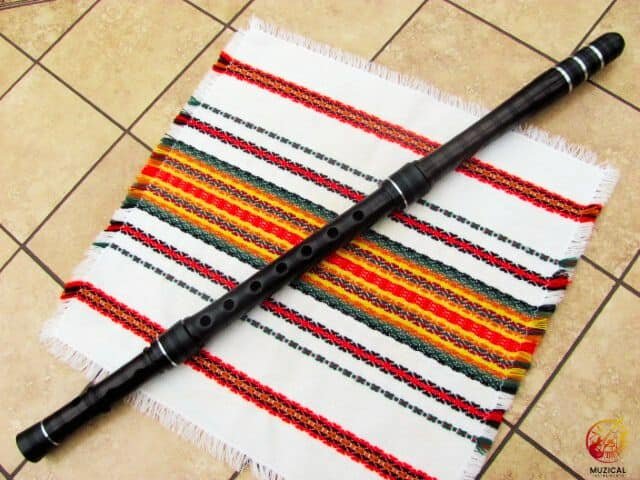
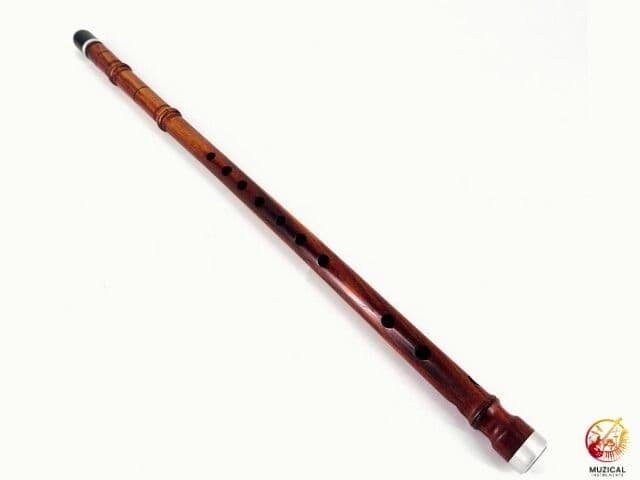
The Turkish kaval, on the other hand, is a different animal. Its sound is usually tighter and more focused. It can sometimes have a sharper, more “nasal” quality. This kaval is very important in Turkish folk songs and spiritual music.
Its special magic is playing “microtones“, the notes that exist between the keys of a piano. These in-between notes are what give Turkish music its unique, soulful feeling.
Here’s a simple breakdown of the main distinctions:
| Feature | Bulgarian Kaval (in D) | Turkish Kaval (Dilsiz) |
|---|---|---|
| Typical Key | D | Varies, but C and D are common |
| Construction | Almost always three wooden pieces | Can be one or three pieces |
| Tone | Breathy, open, rich in overtones | More focused, sometimes nasal or reedy |
| Musical Context | Folk, Wedding Music, Jazz Fusion | Anatolian Folk, Sufi Music, Alevi Bektashi traditions |
| Playing Style | Open embouchure, wide dynamic range | Tighter embouchure, often uses circular breathing |
| Chromaticism | Fully chromatic is a performance goal | Capable, but often emphasizes traditional microtones |
So while they are both kavals, they have their own personalities. Think of the Bulgarian kaval as a flexible voice for many styles, and the Turkish kaval as a master of its own rich traditions.
How do you play a kaval flute?
Getting a sound from a kaval is your first big challenge. Learning how it works is key to understanding what a kaval flute truly is, since you are the most important part of the instrument! It all comes down to three things: your lips, your breath, and your fingers.
First, let’s talk about your lips. You have to make a special shape. Pucker up gently like you’re about to say “poo,” but keep your lips relaxed. Touch the flute’s edge to your bottom lip and tilt the flute away from your face at an angle.
Then, blow a gentle, steady stream of air across the open edge. You’ll need to adjust your lip shape and the angle until you find that magic sweet spot where the flute starts to sing. Don’t worry, this takes practice!
Next is your breath. Power comes from breathing deep from your belly, not your chest. A steady breath creates a steady note. But here’s the cool part: changing your breath does more than just control the volume.
A faster puff of air can actually bend a note’s pitch or make it jump to a higher, clearer note. You are constantly steering the sound with your breath.
Finally, you have the finger holes. The kaval has a set of very low, quiet notes that are super breathy. Most playing happens in the higher, main range, which you reach by blowing a bit faster.
To get all the notes in between, you’ll do tricks like partially covering a hole and using small changes in your breath to find the exact pitch.
Is the kaval hard to learn?
After learning what a kaval flute is, you’re probably wondering, “Is this thing hard to play?” I’ll be straight with you, getting started is the toughest part.
The biggest hurdle is simply making your first clear sound. It’s not uncommon for beginners to practice for days or even weeks before they can get a steady tone. This is where most people get frustrated and give up, so patience is a must.
But here’s another way to look at it. While the beginning is very hard, once you get past that first challenge, the kaval can feel surprisingly natural. Unlike flutes with complicated keys, you have total control over the sound.
That freedom is what makes it so special. Every little change in your breath goes directly into the music, making it a very personal instrument.
The learning journey typically looks like this:
- Sound Production: The first major milestone. Just getting a consistent note.
- Stable Tones: Being able to hold a note without it wavering in pitch or cracking.
- The First Scale: Playing the notes of the fundamental scale cleanly in the lower register.
- Crossing the Octave: Learning to jump from the low register to the main playing register smoothly. This is a huge step.
- Intonation and Ornamentation: The lifelong journey of playing perfectly in tune and adding the trills, grace notes, and bends that give the music its soul.
The material of the kaval can also influence your experience, though less than your technique. Here’s a look at common materials:
| Material | Sound Characteristics | Durability & Care | Cost |
|---|---|---|---|
| Apricot Wood | Warm, rich, and balanced. Considered the classic, traditional voice. | Requires regular oiling; can crack with humidity changes. | Moderate |
| Grenadilla | Bright, very clear, and powerful. A modern choice for loud projection. | Extremely dense and stable, resistant to cracking. | High |
| Ash Wood | Bright and responsive. A good, affordable all-around option. | Good durability and relatively stable wood. | Low to Moderate |
| Polymer/Plastic | Very bright, consistent, and loud. Unaffected by weather. | Virtually indestructible and requires no maintenance. | Low |
A great tip is to record yourself with your phone. Your ears can trick you when you’re playing. A recording is like an honest friend that shows you exactly what you need to work on to get better.
Is the kaval only for traditional folk music?
So, what is a kaval flute in today’s world? It’s easy to think it’s only for old folk music, but this flute is showing up in all kinds of surprising places. Saying a kaval is just for folk is like saying a violin is only for classical music.
Its biggest breakout was in jazz. A brilliant Bulgarian player named Theodosii Spassov mixed his amazing kaval skills with the freedom of jazz music. He proved to everyone that this simple flute could be a powerful solo instrument, right up there with a trumpet or a saxophone.
You’ve almost certainly heard a kaval in movies and video games, too. Its haunting, breathy sound is perfect for creating a mood. It can make you imagine vast, ancient landscapes or feel a sense of mystery. It’s an emotional sound that a computer has a hard time copying.
Kavals are even being used in electronic music now. Music producers love its natural, human sound and are mixing it with modern beats. It’s a cool blend of the ancient and the new. The kaval isn’t a museum piece; it’s a living instrument that’s always finding new songs to sing.
A Song Waiting to be Played
So, after all that, what is a kaval flute? As we’ve seen, it’s much more than just a wooden tube. It’s an instrument with a deep history, and its sound comes directly from the player’s breath and soul.
We learned that different types, like the Bulgarian and Turkish kavals, have their own unique voices. We also saw how the tricky way you shape your lips is the key to its magic, and how this ancient shepherd’s pipe has found a home in modern jazz and even movie scores.
If you’re curious, the best way to start is just by listening. Look up music by Theodosii Spassov or Kudsi Erguner to hear what this flute can do. The kaval takes patience, but it pays you back with a sound that’s as personal as your own voice. Are you ready to give it a listen?
If wind instruments intrigue you, it’s worth discovering what an ocarina is and how it compares to the kaval.
FAQ: What is a Kaval Flute?
1. Is the kaval really that hard to learn?
Yes and no. The beginning is very difficult. Just getting a steady sound can take days or even weeks of practice, which is where most people struggle. But once you get over that first big hurdle, many players find it feels more natural and expressive than other wind instruments. Patience is the key!
2. What’s the difference between a kaval and a ney flute?
This is a great question! They are both end-blown flutes but come from different traditions. The kaval is mainly a folk instrument from the Balkans and Anatolia. The ney is more tied to classical and spiritual music from Persia, the Arab world, and Turkey. They are held differently and produce a different kind of breathy tone.
3. What is a kaval made from?
Traditionally, kavals are made from wood like apricot, plum, or ash. High-end modern kavals might be made from very hard, dark woods. For beginners, a plastic (or “polymer”) kaval is an excellent choice because it’s affordable, sounds great, and won’t crack from weather changes.
4. How much does a kaval usually cost?
The price can vary a lot. A good beginner’s plastic kaval might cost you between $50 and $100. A well-made wooden kaval from a respected maker could be anywhere from $150 to $400. Professional models from master craftsmen can cost much more.
5. What kind of kaval should a beginner buy?
Most people suggest starting with a Bulgarian-style kaval in the key of D. This is the most common type you’ll find, and there are tons of lessons and videos online for it. A plastic one is perfect for starting out.
